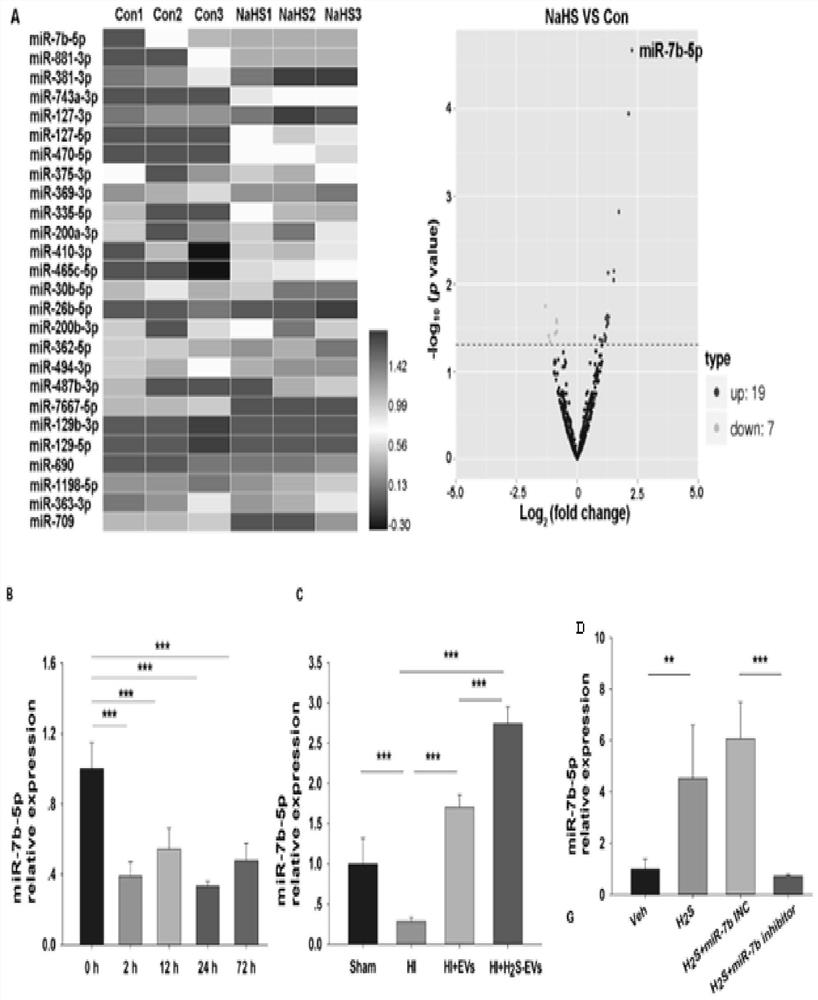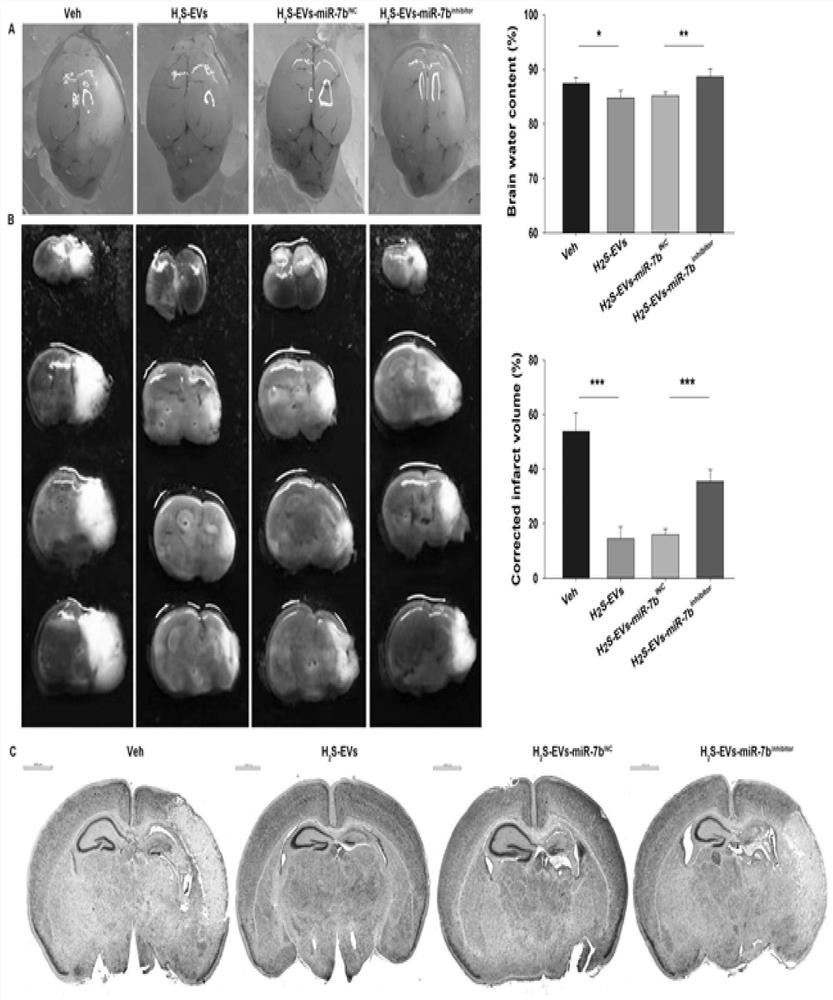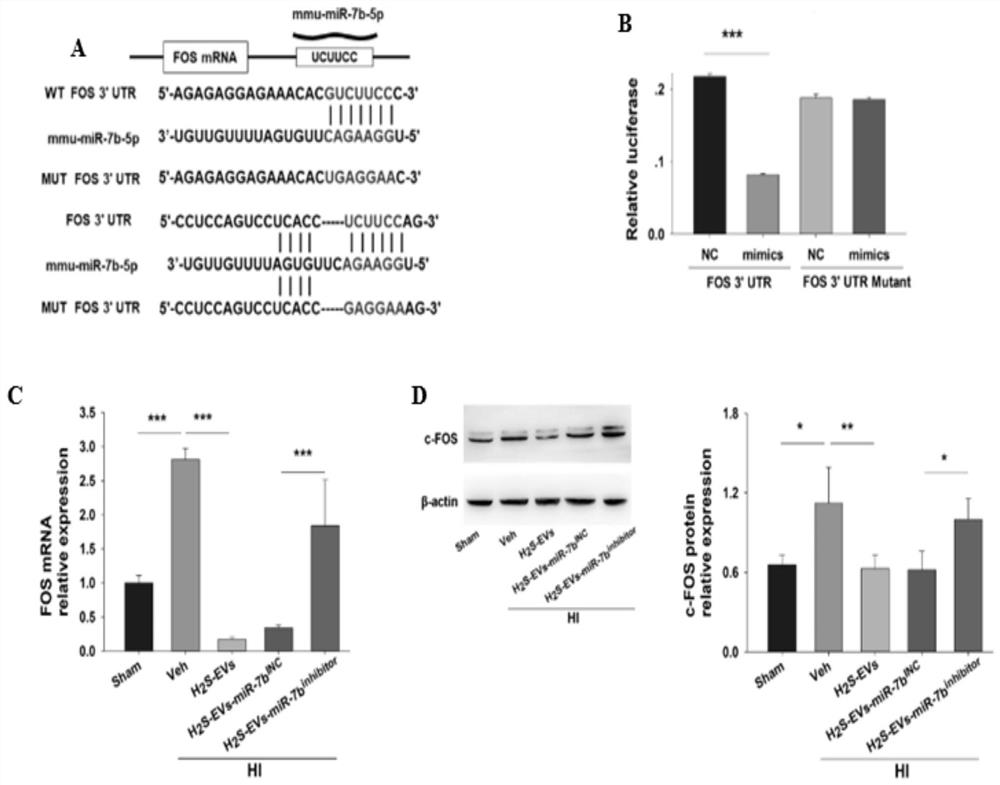Application of hydrogen sulfide-modified mesenchymal stem cell extravesicles as miRNA delivery vehicles in hypoxic-ischemic brain injury
A delivery carrier, hypoxia-ischemia technology, applied in the field of molecular diagnosis and molecular biology, can solve problems such as adverse immune response, insufficient stability, and low delivery efficiency
- Summary
- Abstract
- Description
- Claims
- Application Information
AI Technical Summary
Problems solved by technology
Method used
Image
Examples
preparation example Construction
[0043] The H 2 The preparation method of S-EVs comprises: adding sodium hydrosulfide (NaHS) into the culture medium of bone marrow mesenchymal stem cells for incubation, and collecting extracellular vesicles secreted by the bone marrow mesenchymal stem cells.
[0044] The second aspect of the present invention is to provide a composition comprising extracellular vesicles isolated from the conditioned medium of stem cells; the conditioned medium is preferably the conditioned medium of adult stem cells, more preferably The conditioned medium of mesenchymal stem cells (MSCs), such as the conditioned medium of bone marrow mesenchymal stem cells, the extracellular vesicles of the claimed composition preferably comprise miR-7.
[0045] The above composition can be used to treat hypoxic-ischemic brain injury; more specifically, it has at least one or more of the following uses:
[0046] (a) reducing brain edema induced by hypoxic-ischemic brain damage;
[0047] (b) reducing cerebra...
Embodiment
[0062] After hypoxic-ischemic (HI) brain injury (hypoxic-ischemic brain damage, HIBD) in neonatal mice, the expression of miR-7b-5p in the brain tissue of the injured side was detected at different time points, and it was found that the The expression of miR-7b-5p in brain tissue continued to decrease. At the same time, we performed high-throughput genome sequencing of two EVs, and we found that compared with EVs, H 2 Among the miRNAs of S-EVs, 19 were significantly up-regulated and 7 were significantly down-regulated. The expression of miR-7b-5p was the highest among the up-regulated miRNAs. At present, the existing technical means can modify the miRNA in EVs through pretreatment or genetic engineering to meet the needs of treating different diseases, but the use of viruses or liposomes to transfect cells has problems such as cytotoxicity, cumbersome operation, and high cost. while H 2 S treatment has the advantages of low cost, simple treatment method, and low cytotoxicit...
PUM
 Login to View More
Login to View More Abstract
Description
Claims
Application Information
 Login to View More
Login to View More - R&D
- Intellectual Property
- Life Sciences
- Materials
- Tech Scout
- Unparalleled Data Quality
- Higher Quality Content
- 60% Fewer Hallucinations
Browse by: Latest US Patents, China's latest patents, Technical Efficacy Thesaurus, Application Domain, Technology Topic, Popular Technical Reports.
© 2025 PatSnap. All rights reserved.Legal|Privacy policy|Modern Slavery Act Transparency Statement|Sitemap|About US| Contact US: help@patsnap.com



